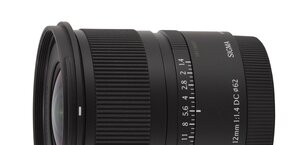Canon EF 100-400 mm f/4.5-5.6L IS II USM
8. Vignetting
| Canon 50D, 100 mm, f/4.5 | Canon 50D, 100 mm, f/5.6 |

|

|
| Canon 50D, 200 mm, f/5.0 | Canon 50D, 200 mm, f/5.6 |

|

|
| Canon 50D, 300 mm, f/5.0 | Canon 50D, 300 mm, f/5.6 |

|

|
| Canon 50D, 400 mm, f/5.6 | Canon 50D, 400 mm, f/8.0 |

|

|
You can notice some traces of vignetting only at longer focal lengths and our measurements confirm that. At the shortest focal length the vignetting is difficult to find even with the lens wide open as it reaches just 11% there (−0.32 EV) and it decreases to 5% (−0.16 EV) on stopping down to f/5.6.
Please Support UsIf you enjoy our reviews and articles, and you want us to continue our work please, support our website by donating through PayPal. The funds are going to be used for paying our editorial team, renting servers, and equipping our testing studio; only that way we will be able to continue providing you interesting content for free. |
- - - - - - - - - - - - - - - - - - - - - - - - - - - - - - - - - - - - - - - - - - - - - - - -
Equally excellent performance you can observe at 200 mm, where by f/5.0 the vignetting reaches 10% (−0.31 EV), and by f/5.6 it decreases to just 5% (−0.16 EV). A tad worse result we got at 300 mm where by f/5.0 and f/5.6 the brightness loss in the frame corners amounted to respectively 12% (−0.36 EV) and 9% (−0.28 EV).
The other increase of that aberration you see at the maximum focal length where, by f/5.6 its level can get to 14% (−0.45 EV); then by f/8.0 it decreases to an imperceptible value of 8% (−0.23 EV).
Now let’s check how the tested lens performed in this category on full frame of the Canon 5D MkIII.
| Canon 5D MkIII, 100 mm, f/4.5 | Canon 5D MkIII, 100 mm, f/5.6 |

|

|
| Canon 5D MkIII, 200 mm, f/5.0 | Canon 5D MkIII, 200 mm, f/5.6 |

|

|
| Canon 5D MkIII, 300 mm, f/5.0 | Canon 5D MkIII, 300 mm, f/8.0 |

|

|
| Canon 5D MkIII, 400 mm, f/5.6 | Canon 5D MkIII, 400 mm, f/8.0 |

|

|
In the case of shorter focal lengths there are no reasons to complain because the vignetting is moderate at most. At 100 mm and by f/4.5 that aberration reaches 23% (−0.75 EV) and it decreases to 11% (−0.32 EV) on stopping down the aperture to f/5.6. By f/8.0 the problem disappears completely (4%).
Not much worse results we got at 200 mm where, with the lens wide open, you have to take into account the light fall-off in the frame corners of 26% (−0.87 EV). The problem becomes slight already by f/5.6, where it reaches 18% (−0.57 EV) and it can be marginalized by f/8.0 where it is just 5% (−0.14 EV).
Only at 300 mm focal length you can notice the vignetting without any problems; at the maximum relative aperture it reaches 33% (−1.15 EV) and on stopping down the aperture to f/5.6 it gets slightly lower, amounting to 29% (−0.99 EV). Only by employing f/8.0 and f/11 you might enjoy an image almost vignetting-free. The values we got there were respectively: 13% (−0.39 EV) and 6% (−0.19 EV).
The highest level of that aberration can be observed at 400 mm focal length where, at the maximum relative aperture, it is 39% (−1.43 EV). You can reduce it by stopping down to f/8.0 to 19% (−0.60 EV) and after employing f/11 you see it decreasing again, this time to 11% (−0.33 EV).
 |
 |
 |
 |






